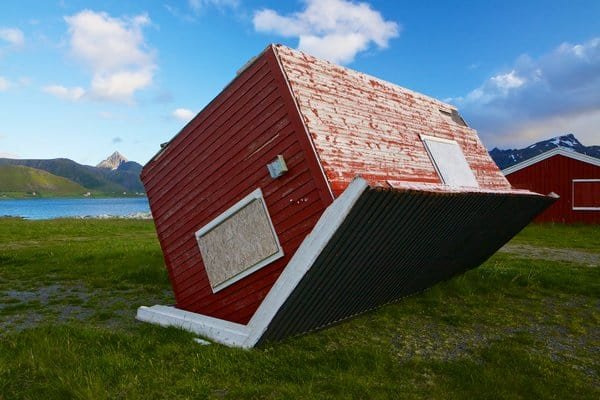Wildfires And You – Creating A Fire-Ready Environment For Natural Disaster Resilience
Welcome to “Wildfires And You – Creating A Fire-Ready Environment For Natural Disaster Resilience”! In this guide, we will take a closer look at how you can play an active role in safeguarding your surroundings against the threat of wildfires.
As someone who understands the importance of protecting your home and community, you are taking the first step towards building a fire-ready environment.
By implementing simple yet effective techniques, you hold the power to minimize the risks and increase the resilience of your property in the face of natural disasters. So let’s dive in and explore the practical steps you can take to protect yourself, your loved ones, and your home from wildfires.
Quick Tips
Tip 1: Clear dead leaves and debris from your roof and gutters to prevent embers from igniting your home during a wildfire.
Tip 2: Create a 30-foot clearance zone around your home by removing flammable plants, shrubs, and wood piles to reduce the risk of fire spreading to your property.
Tip 3: Trim tree branches that are within 10 feet of your house and keep your lawn mowed short to minimize fire fuel near your home.
Tip 4: Install spark arresters on chimneys, stovepipes, and attic vents to prevent sparks from escaping and igniting nearby vegetation or structures.
Establish defensible space around your property
Creating a fire-ready environment for natural disaster resilience is crucial to protecting yourself and your property from devastating wildfires.
To establish defensible space around your property, start by removing any dead or overgrown vegetation within 30 feet of your home. This will create a buffer zone that reduces the chances of flames reaching your dwelling. Additionally, trim any tree branches that overhang your roof and remove flammable materials such as firewood or propane tanks from this area.
Remember to maintain a distance of at least 10 feet between trees to prevent fire from spreading easily. By clearing debris and maintaining a clean yard, you’re reducing fuel sources that could lead to the rapid spread of fire.
Finally, ensure that your property has accessible entry and exit routes, and that your house number is clearly visible for emergency responders. Taking these steps proactively will help safeguard your property during wildfire season.

Create and maintain fuel breaks
Are you worried about the spread of wildfires in your community? One effective way to protect your home and property is by creating and maintaining fuel breaks. Fuel breaks are areas where vegetation has been cleared or modified to reduce the amount of combustible material available to a fire.
By removing dense vegetation and creating a gap, you are creating a barrier that can slow down or even stop the spread of a wildfire. Start by identifying areas around your property that are most vulnerable, such as areas with overgrown grass, shrubs, or trees. Clear these areas by removing dead plants, thinning out vegetation, and pruning tree branches.
Regularly maintain these fuel breaks by mowing grass and maintaining a safe distance between plants and trees. By creating and maintaining fuel breaks, you are taking an active role in protecting your property and community from devastating wildfires.
Clear your roof and gutters
To protect your home from wildfires, it is crucial to clear your roof and gutters regularly. This simple step can play a significant role in creating a fire-ready environment. Start by removing any debris, such as dry leaves or branches, from your roof.
These flammable materials can easily catch fire and ignite your home. Next, clear your gutters from any build-up of leaves or other clutter. During a fire, embers can travel through the air and land in your gutters, igniting the debris and potentially causing a fire to spread.
By keeping your roof and gutters clean, you reduce the risk of a wildfire taking hold on your property. Regular maintenance will ensure your home is prepared for the worst-case scenario and make it more resilient to natural disasters.
Install ember-proof vents
If you want to protect your home from wildfires, one important step is to install ember-proof vents. These vents are designed to keep embers from entering your home through the ventilation system.
When a wildfire is nearby, it’s common for burning embers to be carried by the wind and land on roofs and near vents. Without ember-proof vents, these embers can easily make their way into your attic or crawl space, increasing the risk of fire damage.
By installing these vents, you can greatly reduce the chances of embers entering your home and starting a fire. Remember, it’s important to hire a professional to install these vents, as they require proper sealing and expertise. Don’t wait until it’s too late – take proactive steps to protect your home from wildfires by installing ember-proof vents today.
Final Words
To conclude, it is vital you establish a fire-ready environment for your loved ones to be resilient in the event of a natural disaster. It can be easy to think wildfires are something only other people have to worry about. But the truth is, it could happen to you.
By taking the necessary steps to create a fire-ready environment, you are not only protecting your property but also safeguarding the lives of those you hold dear. This guide serves as a valuable resource, providing you with practical tips and advice on how to mitigate the risk of wildfires and prepare for emergencies. It empowers you to take proactive measures, allowing you to feel more secure and resilient in the face of natural disasters.
So, don’t wait for tragedy to strike. Let’s all come together and make our communities fire-ready, because when it comes to wildfires, the importance of being prepared cannot be overstated. Stay safe, stay informed, and let’s take action today.







